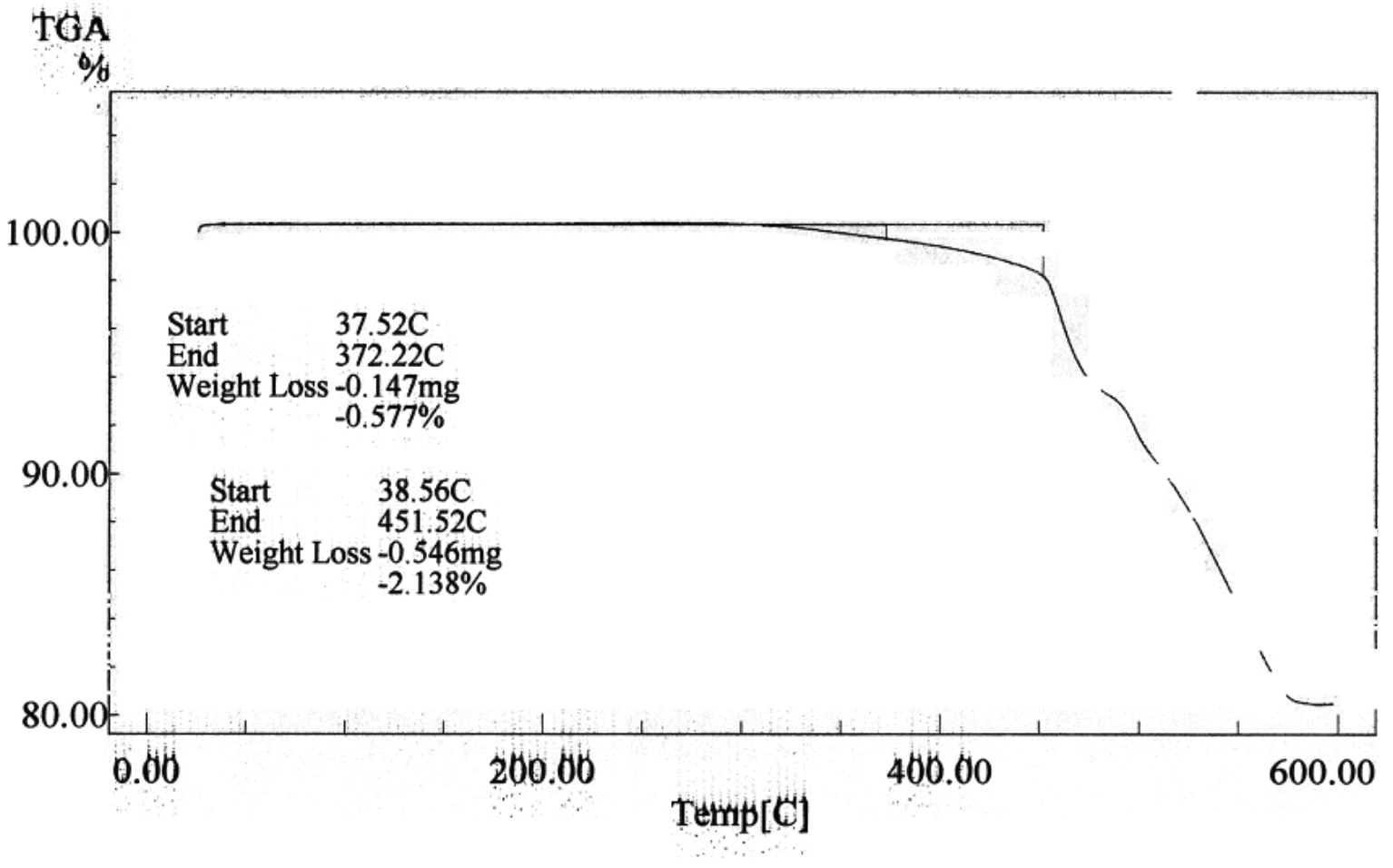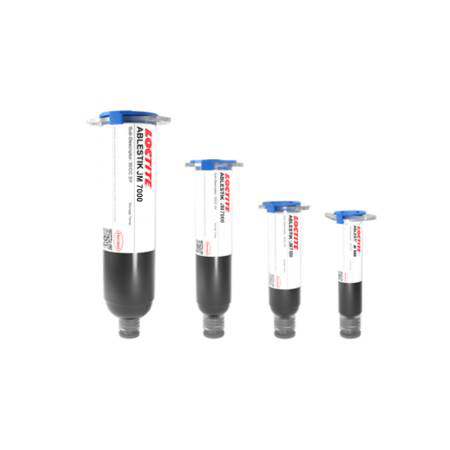LOCTITE ABLESTIK JM7000
- Low moisture in cavity
- Low ionic impurities
- Minimal voiding
Product Description
LOCTITE ABLESTIK JM 7000 die attach adhesive has been formulated for use in high throughput die attach applications and hermetic packages. This material has been used successfully on rigid substrates with die sizes up to 700 mils. LOCTITE ABLESTIK JM 7000 is very stable in high temperatures and has been approved by DESC and Rome Laboratory for military products.
LOCTITE ABLESTIK JM7000 is a cyanate ester, solvent-containing formulation so it will behave similarly to other Cyanate ester products.The degradation temperature, otherwise known as Onset decomposition temperature provided by the TGA for almost identical products shows decomposition of 0.3% at 400°C so JM7000 should be affected in a similar manner.
Typical Cure Schedule
- 30 min @ 150°C
For applications that require higher electrical conductivity, a cure cycle of 15min @ 300°C is recommended.
Technical Specifications
| General Properties | |||||||||
| |||||||||
| |||||||||
| Work life @25°C Work life @25°C Work life is the amount of time we have to work with a material until it is no longer able to be easily worked and applied on a substrate. It is based on the change in viscosity and it can rely on the application requirements. | 16 hours | ||||||||
| Physical Properties | |||||||||
| Viscosity Viscosity Viscosity is a measurement of a fluid’s resistance to flow. Viscosity is commonly measured in centiPoise (cP). One cP is defined as the viscosity of water and all other viscosities are derived from this base. MPa is another common unit with a 1:1 conversion to cP. A product like honey would have a much higher viscosity -around 10,000 cPs- compared to water. As a result, honey would flow much slower out of a tipped glass than water would. The viscosity of a material can be decreased with an increase in temperature in order to better suit an application | 9,000 mPa.s | ||||||||
| Chemical Properties | |||||||||
| |||||||||
| Thermal Properties | |||||||||
| |||||||||
| Glass Transition Temperature (Tg) Glass Transition Temperature (Tg) The glass transition temperature for organic adhesives is a temperature region where the polymers change from glassy and brittle to soft and rubbery. Increasing the temperature further continues the softening process as the viscosity drops too. Temperatures between the glass transition temperature and below the decomposition point of the adhesive are the best region for bonding. The glass-transition temperature Tg of a material characterizes the range of temperatures over which this glass transition occurs. | 240 °C | ||||||||
| Thermal Conductivity Thermal Conductivity Thermal conductivity describes the ability of a material to conduct heat. It is required by power packages in order to dissipate heat and maintain stable electrical performance. Thermal conductivity units are [W/(m K)] in the SI system and [Btu/(hr ft °F)] in the Imperial system. | 1.1 W/m.K | ||||||||
Additional Information

These products are old and so is the data accompanying them. Here is a TGA scan on an already cured JM7000 sample that shows that as the temperature increases the polymer starts to break down. Adhesion strength will start to decrease as the temperature increases approximately past 300°C and it's possible that this weight loss is indication of outgassing or decomposition. Please check the Technical documents section for a new(er) and full(er) data package.



